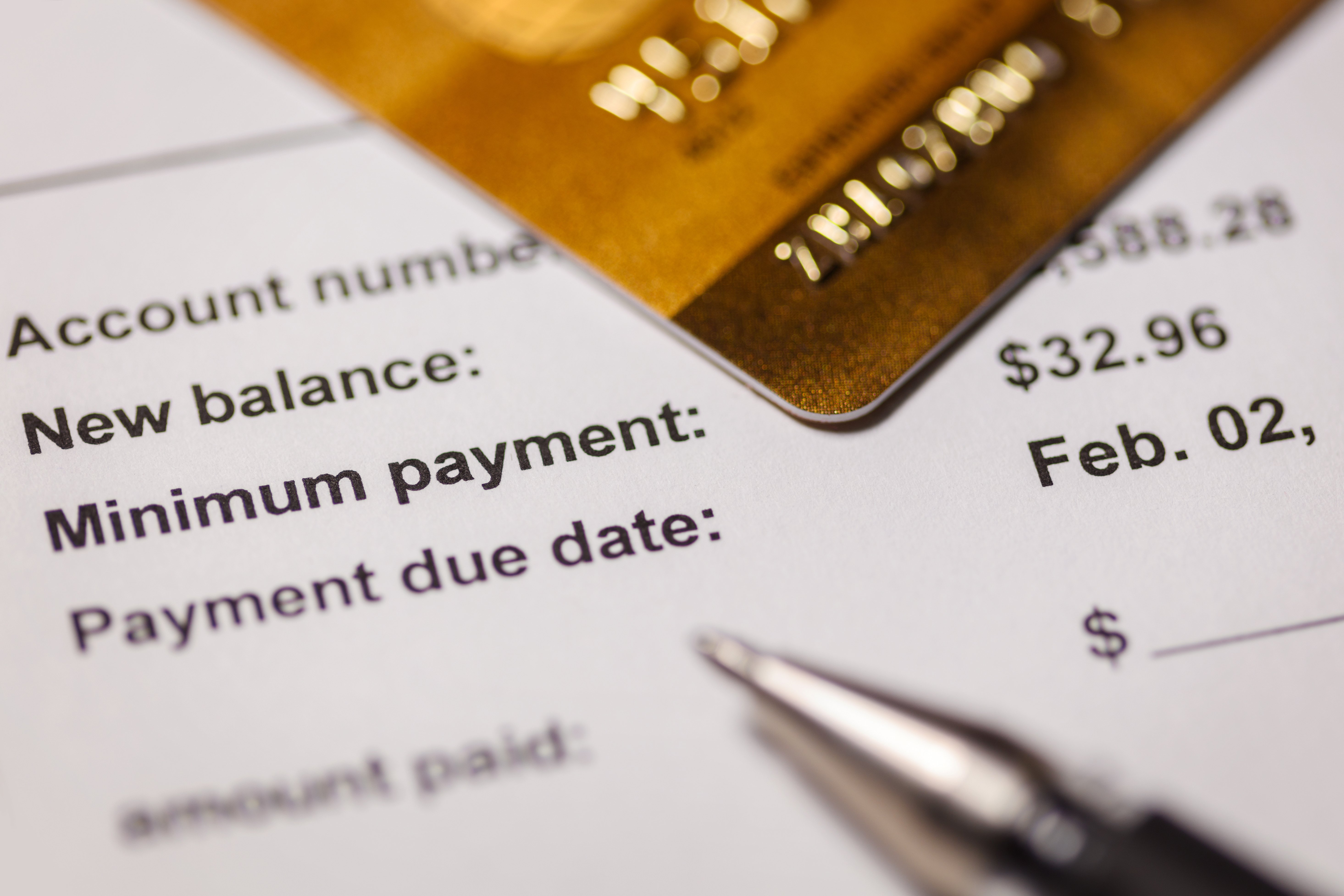5 Dangerous Financial Myths Holding Back Your Money Growth
Most of us believe at least one money myth without realizing it — a piece of “common wisdom” that quietly limits our personal finance growth. From...
Whether you're covering unexpected expenses, making a big purchase, or just need extra cash, our personal loans offer simple, flexible funding tailored to your needs.
Simplify your finances with a loan that combines multiple payments into one. Our consolidation loans help reduce stress and keep your budget on track.
Upgrade your living space with financing designed for renovations, repairs, or remodeling. Our home improvement loans help you enhance your home’s comfort, value, and functionality—on your terms.
Explore expert insights, financial tips, and strategic guidance from the Symple Lending team. Our insights and resource articles are your go-to source for empowering content that helps you make informed decisions on your journey to financial freedom.
Stay up-to-date with the latest press releases, media features, and major announcements from Symple Lending. This section showcases how we're making headlines and driving innovation in the lending industry.
8 min read
Breanne Neely : May 27, 2025 12:00:00 AM

Table of Contents
Did you know that 64% of Americans live paycheck to paycheck? If you’re feeling overwhelmed by money management, you’re not alone. The good news is that taking control of your finances doesn’t require an accounting degree or complicated spreadsheets.
Think of budgeting like organizing your closet - it’s about giving everything its proper place and knowing exactly what you have. A budget helps individuals organize their expenses, savings, and financial obligations into a manageable system. When you understand where every dollar goes, you gain the power to make intentional choices that align with your goals and reduce financial stress.
Budgeting is a crucial aspect of personal finance that helps individuals manage their income and expenses effectively. Think of a budget as a roadmap for your money, guiding you on allocating your monthly income towards various expenses, savings, and debt payments. By creating a budget, you can prioritize your financial goals, such as building an emergency fund, paying off credit card debt, and saving for long-term goals like retirement.
A well-structured budget considers fixed expenses like rent and utilities and variable expenses like entertainment and groceries. Fixed expenses remain constant each month, while variable expenses can fluctuate. By budgeting regularly, you can reduce stress, save money, and achieve financial stability. Remember, budgeting isn’t about restricting your spending; it’s about making intentional choices that align with your financial goals and help you achieve financial peace.
A well-planned budget gives you control over your spending and helps you track where your money goes. It allows you to decide between wants and needs, making informed decisions about your financial priorities. You can make better financial choices when you know exactly what’s coming in and going out. You’ll worry less about surprise bills and feel more confident about meeting your financial goals.
 Setting SMART Financial Goals
Setting SMART Financial GoalsWhen planning your money goals, think specifically and clearly. Estimate your monthly income and expenses to set realistic financial goals. SMART Goals help you map out what you want—whether it’s saving $6,000 for emergencies or paying off $2,000 in credit card debt by next year. Put numbers and dates on your plans, like setting aside $250 monthly for your emergency fund or adding $175 to monthly debt payments.
Start by making a list of all your money sources. Include your regular paycheck, side work, child support, and any extra cash. If your income changes month to month, look at what you earned over the past 3-6 months to find your average. Remember to work with your take-home pay - the money you get after taxes and other deductions.
Sort your spending into clear groups: must-haves (rent, food, bills), nice-to-haves (movies, restaurants), and future planning (savings, paying off debt). Determine your financial priorities and monthly spending habits to effectively allocate funds towards savings, debt repayment, and emergency planning. If you are experiencing financial stress, one of the best ways to keep track of your spending is to write down what you spend right after buying or check your statements each week. A simple notebook, spreadsheet, or money app can help you spot your spending patterns.

The 50/30/20 rule splits your money into three parts: 50% for basic needs, 30% for things you want, and 20% for savings and debt. For example, if you bring home $4,000 monthly, you’d spend $2,000 on bills, $1,200 on fun stuff, and $800 toward your future.
Regular contributions to your savings and investments are crucial. Consistently setting aside money helps build an emergency fund to cover essential living expenses and maintain financial stability.
The 80/20 method is simpler—save 20% first, then use the rest as needed. This works well if you prefer less tracking but want to make sure you save.
To create a budget plan, start by tracking your income and expenses to understand where your money is going. Begin by listing all your sources of income, including your regular paycheck, side gigs, and any other money you receive. Next, identify your fixed expenses, such as mortgage or rent, car payments, and insurance, and allocate specific amounts for each category.
Consider using a zero-based budget, assigning every dollar to a particular budget category. This method ensures you account for all your income and expenses, leaving no room for unplanned spending. Make sure to include a pre-determined amount for savings, emergency funds, and debt payments, such as credit card debt or student loans.
Review your bank and account statements to ensure you’re accounting for all expenses, including irregular expenses like medical bills or car repairs. By creating a detailed budget plan, you can take control of your finances and work towards achieving your financial goals.
Money apps make tracking expenses easy and automatic. A few options are available for tracking spending, each with unique features. Free tools like Mint connect to your accounts and sort purchases for you. YNAB works well if you want to plan every dollar, while Goodbudget uses digital envelopes to divide your money. EveryDollar offers clear visuals of where your money goes.
Check subscriptions you rarely use, like streaming services, gym memberships, or monthly boxes. Finding ways to spend less on these recurring expenses can help balance your budget. Watch out for daily coffee runs and lunch outings that add up fast. Many people save hundreds of dollars monthly by cooking at home and bringing lunch to work. Look at your phone bill too - you might find a better plan or remove add-ons you don’t need.
Start your emergency savings with one month’s basic expenses as your first target. Put money into a separate savings account, away from your daily spending. Even $25-50 per week adds up over time. Once you hit one month’s expenses, work toward three months, then six months of savings.
Regular contributions to your emergency fund are crucial for maintaining financial stability. When you need to use your emergency money, make filling it back up a top priority. Set up direct deposit to move cash straight to savings on payday - this helps your emergency fund grow without thinking about it.
 When paying off debt, set aside money each month specifically for debt payments. Two main methods work well: The snowball method starts with your smallest debt first, while the avalanche method targets highest-interest debts. For example, if you have $300 monthly for debt, you might put $200 toward your highest-rate credit card and split the rest between other bills.
When paying off debt, set aside money each month specifically for debt payments. Two main methods work well: The snowball method starts with your smallest debt first, while the avalanche method targets highest-interest debts. For example, if you have $300 monthly for debt, you might put $200 toward your highest-rate credit card and split the rest between other bills.
Achieving paid-off goals can alleviate financial stress and lead to greater financial flexibility.
Many people find success building budgets by picking one method and sticking to it. For example, if you owe $5,000 on three credit cards, putting an extra $100 monthly toward one card while making minimum payments on others speeds up your payoff timeline.
Start with a fixed monthly savings amount based on your take-home pay. Setting specific savings goals within your budgeting process can help you track and adjust your spending to meet these objectives. Even small amounts like $50 weekly add up over time. Split your savings into short-term needs, big purchases, and retirement. Be sure to adjust your savings plan as your income changes – bump up your savings by half of any raise or extra money you receive.
Start by checking your daily spending choices. Understanding how you spend your money is crucial to achieving your financial goals. Before buying, ask if each purchase helps or hurts your money goals. Track every dollar using a notes app or small notebook - this simple habit helps you spot areas where money slips away.
Make a weekly money check-in part of your routine. Look at what you spent and compare it to your budget targets. Little changes, like bringing coffee from home or meal planning, add up fast.
Keep your spending on track with simple charts and graphs in a spreadsheet. Color-code different expense types and add notes about what worked each month. Free templates make starting easy - just plug in your numbers and watch your progress.
At the end of the month, evaluate and adjust your budget based on the spending data collected to ensure your financial goals are being met.
Apps on your phone help catch daily purchases, while a small notebook works great for quick notes. Check your numbers weekly to build a better budget by spotting patterns and finding ways to save more money.

Make family money discussions normal and comfortable. Set regular “money meetings” where everyone shares ideas about spending and saving. Kids can learn by helping track savings, while partners can split bill-paying duties.
Discussing financial priorities during these meetings is crucial. Identify and assess your income and expenses in relation to your priorities to make informed decisions about saving, investing, and addressing debt.
Work together to pick family money goals, like planning a vacation or building college savings. When everyone helps choose the goals, they will likely stick to the budget.
Keep a budget chart on the fridge where family members mark their spending. This helps everyone see how their choices affect the family’s financial picture.
Set your money moves on autopilot by scheduling bill payments and savings transfers. Most banks let you set up automatic payments for fixed bills like rent, car loans, and utilities. This helps you avoid missed payments and keeps your credit score healthy.
Automating your finances should also include investing as part of your financial planning. By allocating funds to investments, you can work towards short-term and long-term financial goals.
Link your checking account to a separate savings account and schedule weekly or monthly transfers. Even $20 per week adds up to over $1,000 yearly without extra effort.
When your paycheck changes month to month, look at your lowest-earning months to set your basic budget. Put extra money from better months into a separate account as a cushion. This helps smooth out income gaps when work slows down.
Saving money is crucial for setting aside funds for irregular income and unexpected expenses. Keep a “surprise expense fund” ready - about $500-1000 for things like car repairs or medical bills. This helps build control over your main emergency savings from smaller setbacks.
For example, if you freelance and earn between $3,000-5,000 monthly, budget using the $3,000 figure and save the rest.
Look at your spending patterns across different seasons to spot when costs go up or down. For summer, you might need more for air conditioning and activities. Winter often brings higher heating bills and holiday expenses.
Plan ahead by setting aside money monthly for these known changes. If your winter heating costs $300 more per month, save $25 weekly starting in summer. This helps avoid financial stress when bills spike. Additionally, consider your short-term goals, such as saving for seasonal expenses or upcoming vacations, to ensure you are financially prepared for both expected and unexpected costs.
Put seasonal items in your budget, like back-to-school supplies in August or gift-buying in December. Many people save 1/12 of their yearly seasonal costs each month to stay ready.
 One common mistake people make when budgeting is not accounting for impulse purchases or unexpected expenses. To avoid this, consider setting aside a small amount each month for entertainment or unexpected expenses. This way, you have a buffer for those spontaneous buys or surprise costs without derailing your budget.
One common mistake people make when budgeting is not accounting for impulse purchases or unexpected expenses. To avoid this, consider setting aside a small amount each month for entertainment or unexpected expenses. This way, you have a buffer for those spontaneous buys or surprise costs without derailing your budget.
Another mistake is not prioritizing needs over wants, leading to overspending on non-essential items. It’s important to focus on your financial goals and make sure your spending aligns with them. According to the Federal Trade Commission, creating a budget and tracking expenses can help individuals avoid debt and achieve financial stability.
By avoiding common mistakes and staying committed to your budget, you can save money, reduce debt, and achieve your long-term financial goals. Remember, budgeting is a continuous process that requires regular adjustments and discipline.
Check your spending plan monthly to catch problems early. Compare what you planned versus what you spent, then make notes about what worked and where you went off track.
Determine your financial priorities during these reviews to ensure you are effectively allocating funds towards savings, debt repayment, and emergency planning.
Look at bigger trends every three months - are your basic costs going up? Did you save what you hoped for? Many people find reviewing their budget weekly helps them stay on target.
When life changes, like a new job or moving, update your budget immediately to match your new normal.
Maintaining financial discipline requires regular monitoring of your budget and making adjustments as needed. One effective method is the pay yourself first budget, where you allocate a portion of your income towards savings and debt payments before spending on other expenses. This ensures that your financial goals are prioritized.
Make sure to review your budget regularly to ensure you’re on track to meet your financial goals, such as saving for a specific purpose or reducing debt. Take advantage of resources like budgeting apps or spreadsheets to track your expenses and stay organized.
By maintaining financial discipline and sticking to your budget, you can achieve financial freedom, reduce stress, and enjoy the benefits of having more money in your savings account. Remember, the key to successful budgeting is consistency and commitment.
Creating a budget is just the beginning – the real magic happens when you make it a natural part of your daily life. By following the strategies outlined above, you’ll develop a personalized money management system that fits your lifestyle and helps you achieve your financial goals without feeling restricted.
Remember, budgeting isn’t about limiting yourself – it’s about empowering yourself to make confident money decisions. Start small, stay consistent, and watch as your financial stress transforms into financial peace. The journey to financial wellness is a marathon, not a sprint, and every step forward counts.
Disclaimer: The information provided in this blog post is for educational and informational purposes only and should not be considered as financial, legal, investment, or tax advice. Symple Lending is not responsible for any financial outcomes resulting from following the information or ideas shared in this blog. Every individual's financial situation is unique, and we strongly encourage readers to take their own circumstances into consideration and consult with a qualified financial, legal, tax, and investment advisor before making any financial decisions. Symple Lending does not provide financial, legal, tax, or investment advice.

Most of us believe at least one money myth without realizing it — a piece of “common wisdom” that quietly limits our personal finance growth. From...

Have you ever started the month with grand savings plans only to find your account balance exactly where you left it? You're facing a common...

Did you know that Americans collectively spend over $200 billion in credit card interest and fees annually? That’s because making minimum payments on...

Did you know that the average American spends about $1,500 per year on purchases they later regret? That’s money that could be working toward your...

Did you know that 78% of Americans live paycheck to paycheck, regardless of their income level? Financial wellness isn't just about how much money...

Did you know that people who create a clear financial plan after 40 are three times more likely to achieve their retirement goals? Yet only 33% of...